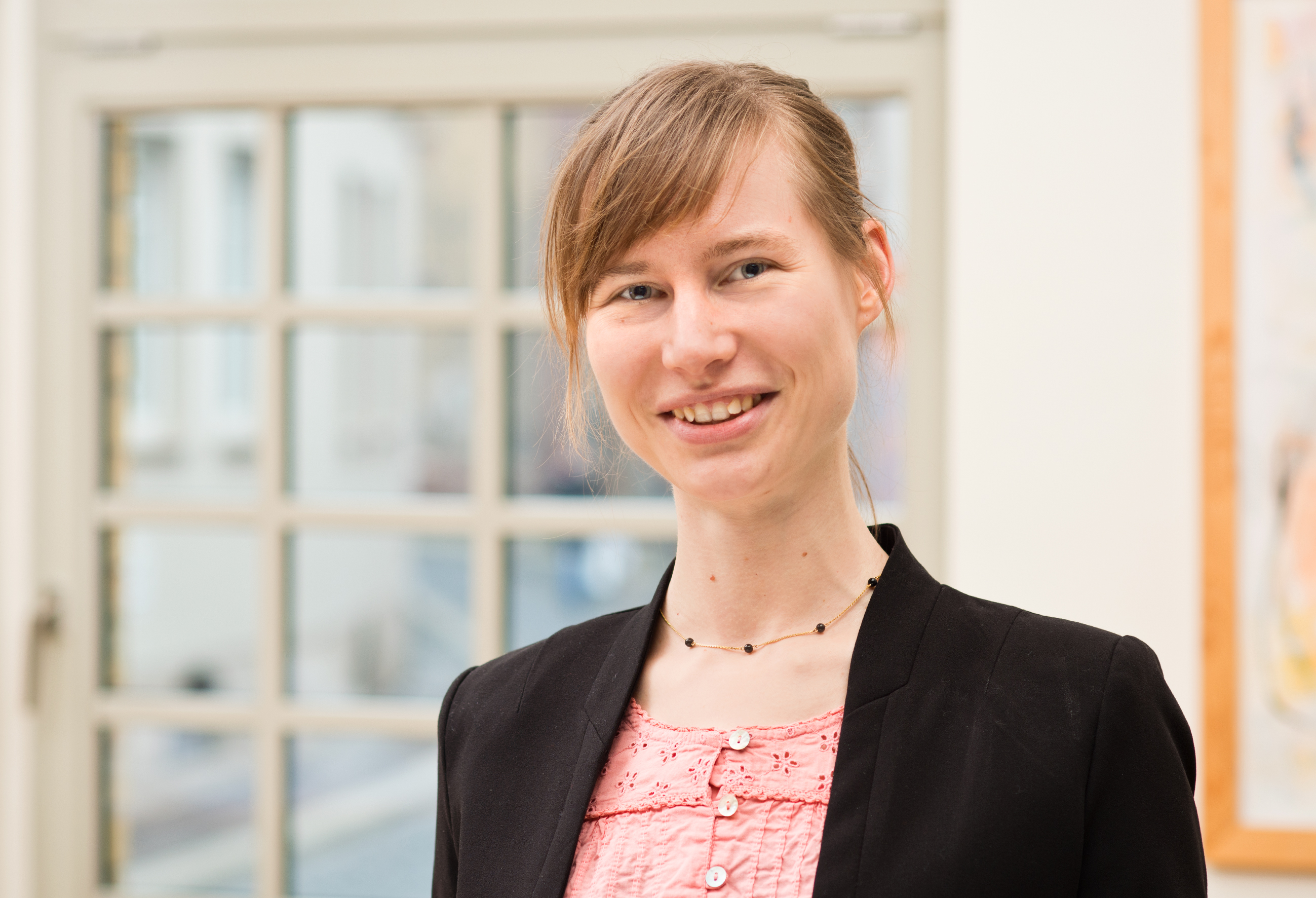Evaluation of Subsidy Programmes
This research group develops the scientific foundations for causal impact analysis of policy interventions within the European Union, with a particular focus on place-based policies. Despite significant public spending on such programmes in many developed economies, there is limited evidence on their effectiveness and efficiency.
Our approach integrates three key dimensions: first, the systematic use of administrative funding data and legislative documents; second, the application of advanced methods in policy impact evaluation; and third, the exchange of knowledge among researchers, policymakers, public administration, and civil society. Without this integration, research risks becoming either overly abstract or disconnected from the institutional and legal realities of policy implementation. By combining these elements, we create robust research designs grounded in real data and legal frameworks.
This approach allows us to generate evidence-based insights that contribute to better informed decision-making—not only in politics but also within civil society. The findings of our work have contributed to the revision and improvement of existing subsidy programmes. The research group is closely embedded in the activities of the Centre for Evidence-based Policy Advice (CEP), ensuring both scientific rigor and practical relevance. In doing so, we embody the leitmotif of the Leibniz Association: theoria cum praxi.
Research Cluster
Economic Dynamics and StabilityYour contact

- Department Centre for Evidence-based Policy Advice
EXTERNAL FUNDING
09.2019 ‐ 09.2022
Establishing Evidence-based Evaluation Methods for Subsidy Programmes in Germany (EVA-KULT)
The project aims at expanding the Centre for Evidence-based Policy Advice at the Halle Institute for Economic Research (IWH-CEP).
01.2018 ‐ 12.2020
Networked growth - Innovative Saxony-Anhalt through digital business models (Competence Center 4.0)
01.2017 ‐ 12.2018
Political Participation in Eastern Germany
12.2015 ‐ 11.2018
Socio-economic Effects of Research on Innovative Approaches for POC Diagnostics
Part of the EXASENS project. Coordinated by the Leibniz Institute of Photonic Technology (IPHT) in Jena, nine Leibniz institutes are working together on researching point-of-care (POC) technology for the prediction and diagnosis of chronic inflammatory respiratory diseases. See press release.
02.2017 ‐ 02.2018
The Importance of Non-University Research Institutions for the Development of Firms and Regions (Be_For_Reg-Projekt)
01.2015 ‐ 12.2016
Evaluation of the "Joint Task 'Improving the Regional Economic Structure'" in the Federal State of Saxony-Anhalt
Refereed Publications
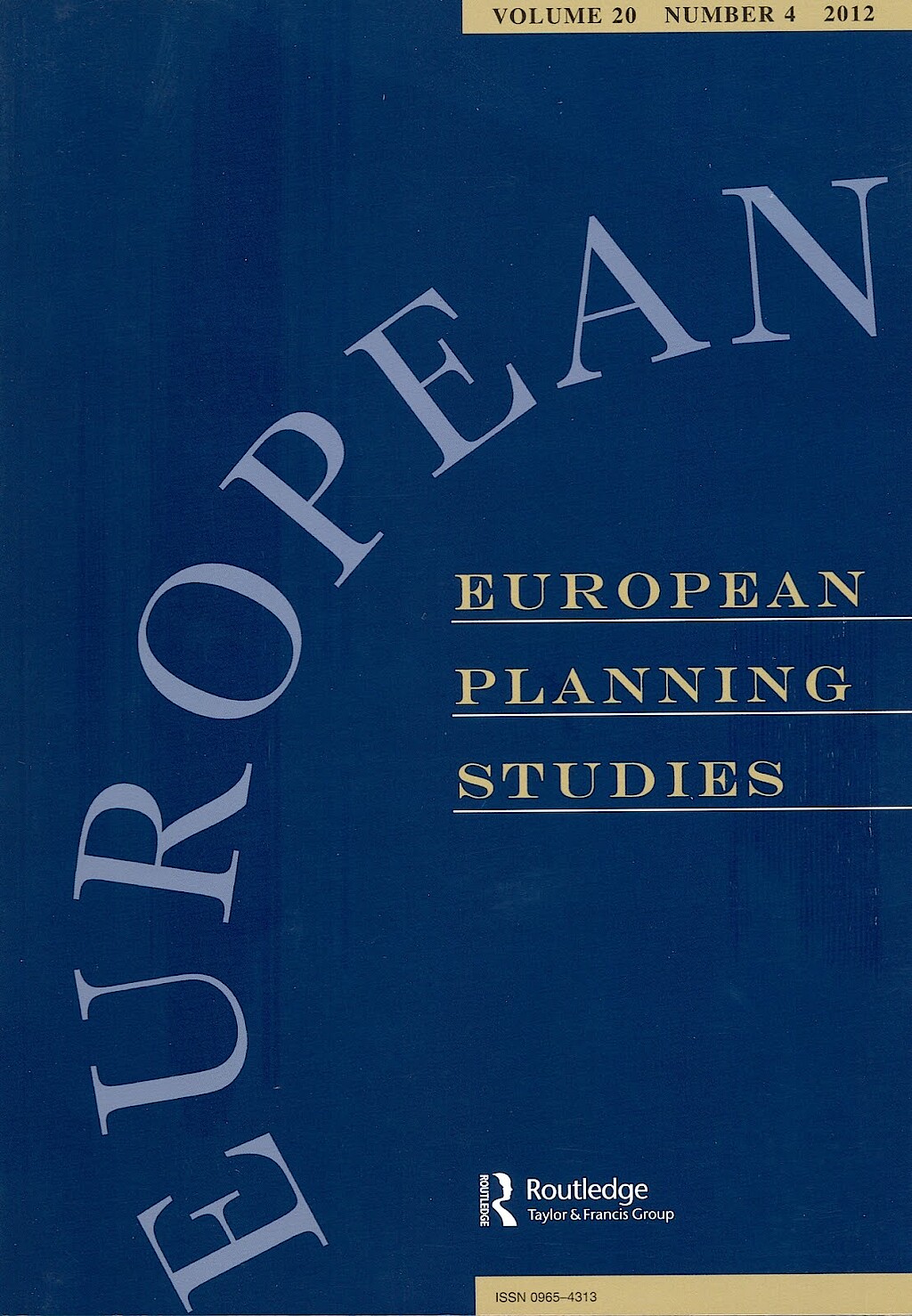
Regions as Selection Environments? The Emergence of the Solar Industry in Germany from 1992 to 2008
in: European Planning Studies, No. 11, 2013
Abstract
The spatial evolution of the German solar industry is analysed in the light of the “window of locational opportunity” and the “selection environment” approach. The paper argues that differences in the regions' ability to promote the emergence of local external economies contribute to increasing regional differentiation in the German structure of the industry. Applied empirical methods enclose longitudinal firm entry and network analysis. A special focus is given upon the realignment processes in the science system. Our findings show a relatively rapid spatial concentration of production in eastern Germany since the year 2000. This process is accompanied by intensified networking between firms and between firms and universities as well as research institutes. The responsiveness of regional institutions and the self-organizing capabilities of the solar firms substantiate some propositions of the “selection environment” approach.
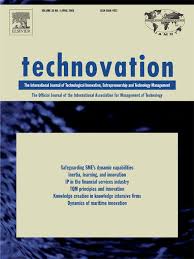
What Drives Innovation Output from Subsidized R&D Cooperation? — Project-level Evidence from Germany
in: Technovation, No. 6, 2012
Abstract
Using a large dataset of 406 subsidized R&D cooperation projects, we provide detailed insights into the relationship between project characteristics and innovation output. Patent applications and publications are used as measures for the innovation output of an R&D project. We find that large-firm involvement is strongly positively related with the number of patent applications, but not with the number of publications. Conversely, university involvement has positive effects on projects’ innovation output in terms of the number of publications but not in terms of patent applications. In general, projects’ funding as measure of projects’ size is an important predictor of the innovation output of R&D cooperation projects. No significant effects are found for the number of partners as (an alternative) measure of projects’ size, for spatial proximity between cooperation partners, for the involvement of a public institute for applied research, and for prior cooperation experiences. We derive conclusions for the design of R&D cooperation support schemes.
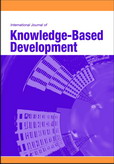
A Systemic View on Knowledge-based Development Metrics
in: International Journal of Knowledge-Based Development, No. 1, 2012
Abstract
Drawing on the systems perspective of innovation processes, this article proposes a conceptual approach for a comprehensive analysis of regional knowledge generation and transfer. Instead of focusing on one single indicator, the approach emphasizes the importance to take multiple channels of knowledge transfer into account. This provides valuable insights into the spatial structure of innovation processes on different levels. We disentangle the innovation process and consider four different layers: i.) publications in peer-reviewed journals, ii.) patent applications, iii.) formal R&D collaboration projects, the iv.) localized input-output relations. Further, we demonstrate the relevance of the „multi-layer approach‟ by applying it empirically to a specific regional innovation system: The Free State of Saxony – a federal state in Germany. We argue that the approach could be a valuable tool to inform policy-makers about knowledge-based regional development strategies.
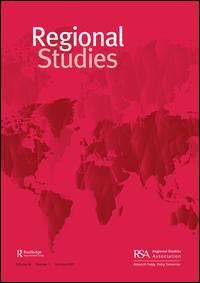
The Identification of Regional Industrial Clusters Using Qualitative Input-Output Analysis (QIOA)
in: Regional Studies, No. 1, 2011
Abstract
The 'cluster theory' has become one of the main concepts promoting regional competitiveness, innovation, and growth. As most empirical applications focus on measures of concentration of one industrial branch in order to identify regional clusters, the appropriate analysis of specific vertical relations is developing in this discussion. This paper tries to identify interrelated sectors via national input-output tables with the help of minimal flow analysis (MFA). The regionalization of these national industry templates is carried out with the allocation of branch-specific production values on regional employment. As a result, the paper shows concentrations of vertical clusters in only 27 of 439 German Nomenclature des Units Territoriales Statistiques (NUTS)-3 regions.

Economic Structure and Regional Performance in Germany, 2002-2007
in: European Planning Studies, No. 2, 2012
Abstract
This paper explores the impact of industrial clusters on regional growth at the German labour market region level using a regional convergence model. Based on the results of an exploratory study of the geography of German industrial clusters, we are able to differentiate the impact of industrial clustering from a horizontal and a vertical perspective while taking regional convergence into consideration. The results indicate that in addition to an all-German process of convergence, a specific East German one can be identified. The different types of industrial clusters show mixed effects within this framework. While vertically isolated industrial clusters have a negative impact on regional growth in this period, positive growth effects can be identified when industrial clusters show an intra-regional vertical interconnectedness.
Working Papers
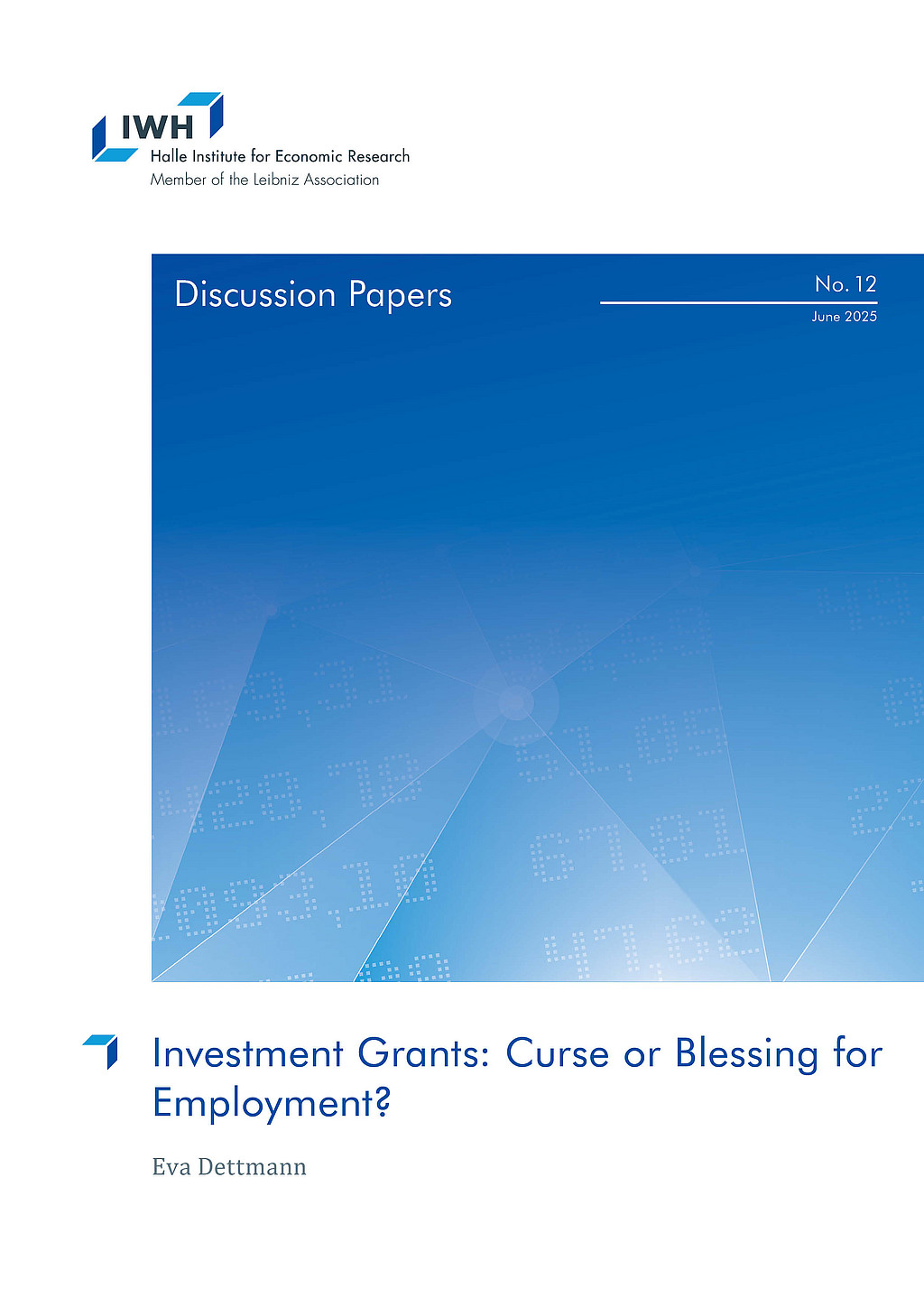
Investment Grants: Curse or Blessing for Employment?
in: IWH Discussion Papers, No. 12, 2025
Abstract
<p>In this study, establishment-level employment effects of investment grants in Germany are estimated. In addition to the quantitative effects, I provide empirical evidence of funding effects on different aspects of employment quality (earnings, qualifications, and job security) for the period 2004 to 2020. The database combines project-level treatment data, establishment-level information on firm characteristics and employee structure, and regional information at the district-level. For the estimations, I combine the difference-in-differences approach of Callaway and Sant’Anna (2021) with ties matching at the cohort level. The estimations yield positive effects on the number of employees, but point to contradicting effects of investment grants on different aspects of employment quality.</p>
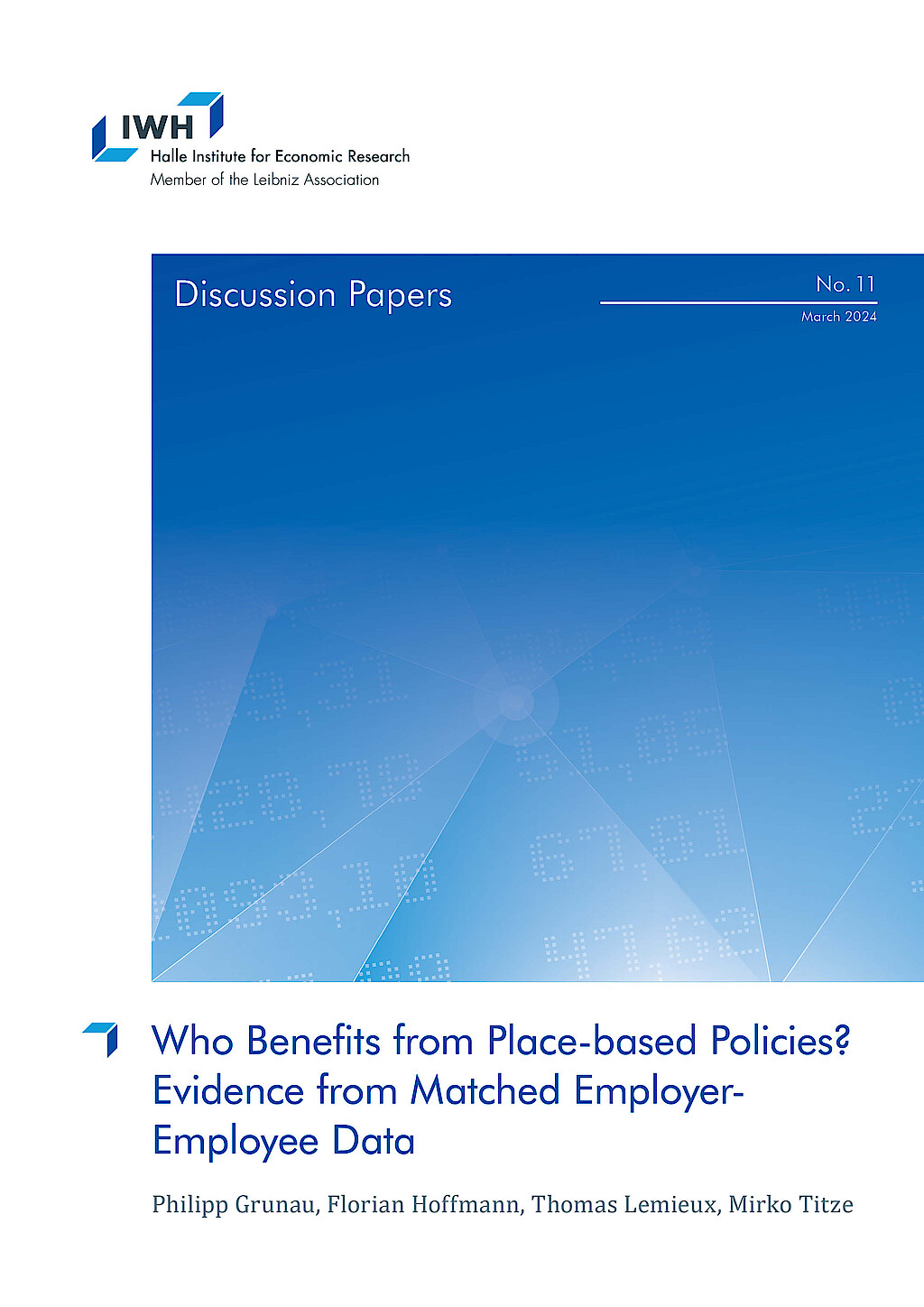
Who Benefits from Place-based Policies? Evidence from Matched Employer-Employee Data
in: IWH Discussion Papers, No. 11, 2024
Abstract
<p>We study the granular wage and employment effects of a German place-based policy using a research design that leverages conditionally exogenous EU-wide rules governing program parameters at the regional level. The place-based program subsidizes investments to create jobs with a subsidy rate that varies across labor market regions. The analysis uses matched data on the universe of establishments and their employees, establishment-level panel data on program participation, and regional scores that generate spatial discontinuities in program eligibility and generosity. Spatial spillovers of the program linked to changing commuting patterns can be assessed using information on place of work and place of residence, a unique feature of the data. These rich data enable us to study the incidence of the place-based program on different groups of individuals. We find that the program helps establishments create jobs that disproportionately benefit younger and less-educated workers. Funded establishments increase their wages but, unlike employment, wage gains do not persist in the long run. Employment effects estimated at the local area level are slightly larger than establishment- level estimates, suggesting limited economic spillover effects. On the other hand, spatial spillovers are large as over half of the employment increase comes from commuters. Using subsidy rates as an instrumental variable for actual subsidies indicates that it costs approximately EUR 25,000 to create a new job in the economically disadvantaged areas targeted by the program.</p>
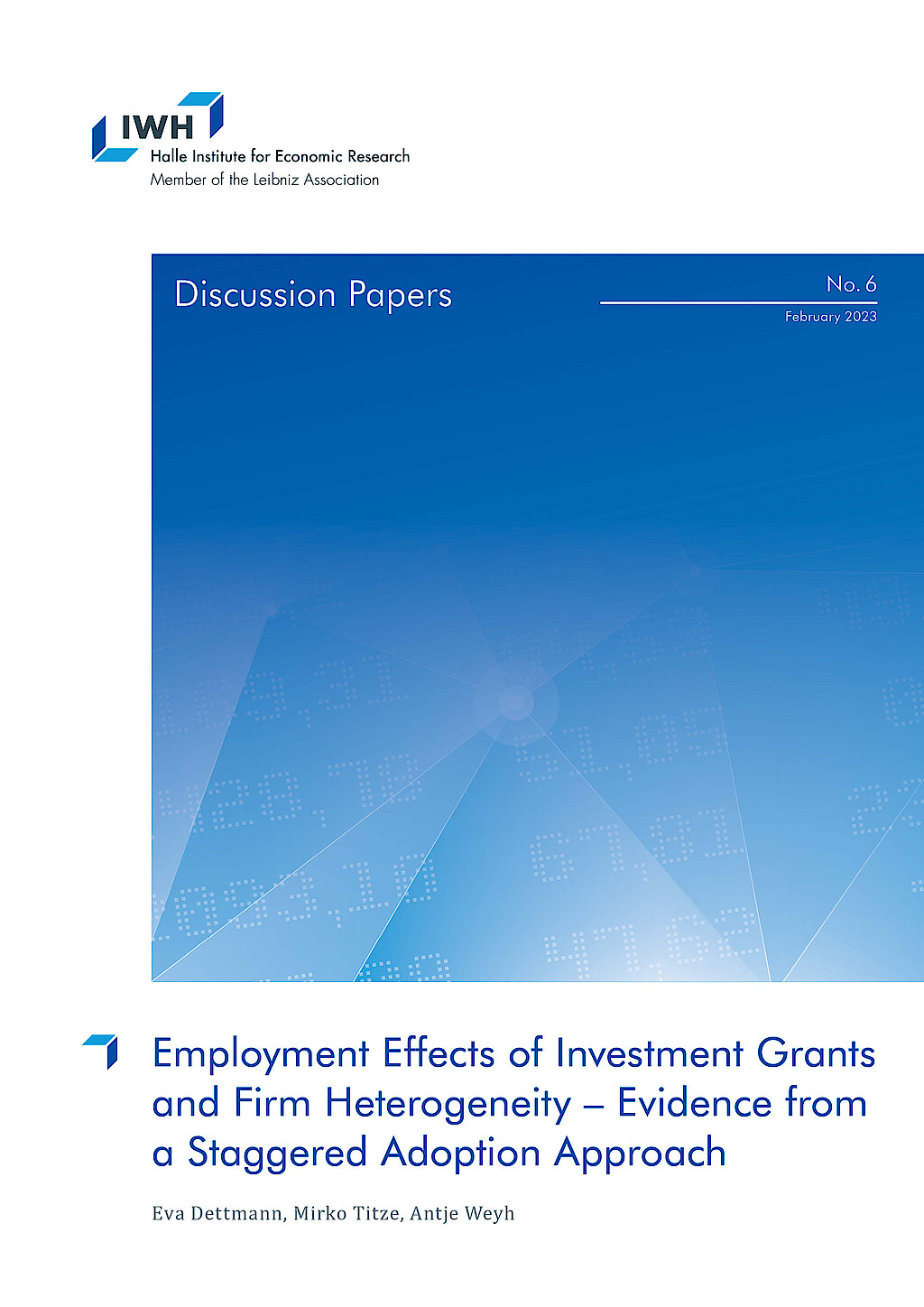
Employment Effects of Investment Grants and Firm Heterogeneity – Evidence from a Staggered Adoption Approach
in: IWH Discussion Papers, No. 6, 2023
Abstract
<p>This study estimates the firm-level employment effects of investment grants in Germany. In addition to the average treatment effect on the treated, we examine discrimination in the funding rules as potential source of effect heterogeneity. We combine a staggered difference-in-differences approach that explicitly models variations in treatment timing with a matching procedure at the cohort level. The findings reveal a positive effect of investment grants on employment development in the full sample. The subsample analysis yields strong evidence for heterogeneous effects based on firm characteristics and the economic environment. This can help to improve the future design of the program.</p>
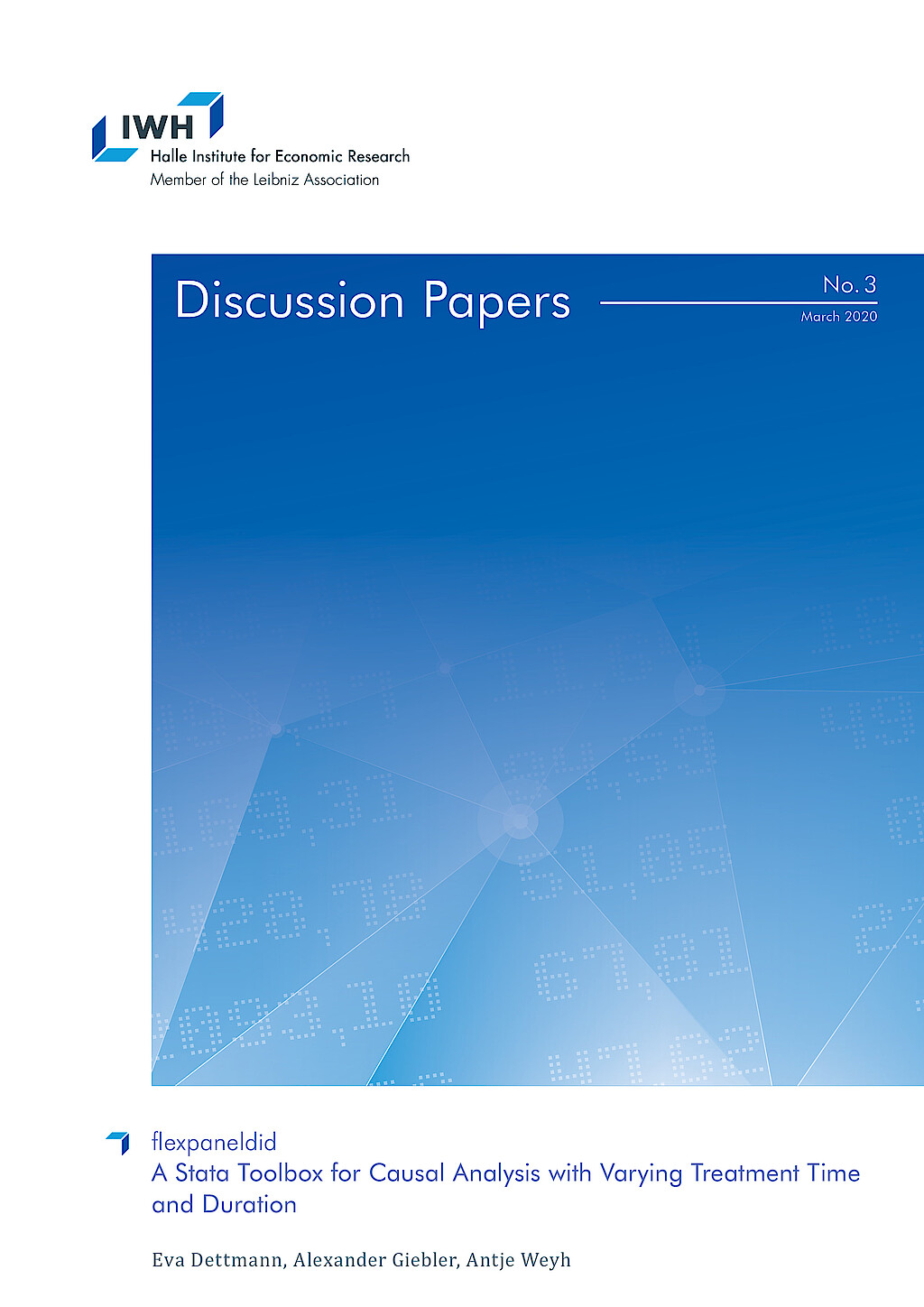
flexpaneldid: A Stata Toolbox for Causal Analysis with Varying Treatment Time and Duration
in: IWH Discussion Papers, No. 3, 2020
Abstract
The paper presents a modification of the matching and difference-in-differences approach of Heckman et al. (1998) for the staggered treatment adoption design and a Stata tool that implements the approach. This flexible conditional difference-in-differences approach is particularly useful for causal analysis of treatments with varying start dates and varying treatment durations. Introducing more flexibility enables the user to consider individual treatment periods for the treated observations and thus circumventing problems arising in canonical difference-in-differences approaches. The open-source flexpaneldid toolbox for Stata implements the developed approach and allows comprehensive robustness checks and quality tests. The core of the paper gives comprehensive examples to explain the use of the commands and its options on the basis of a publicly accessible data set.
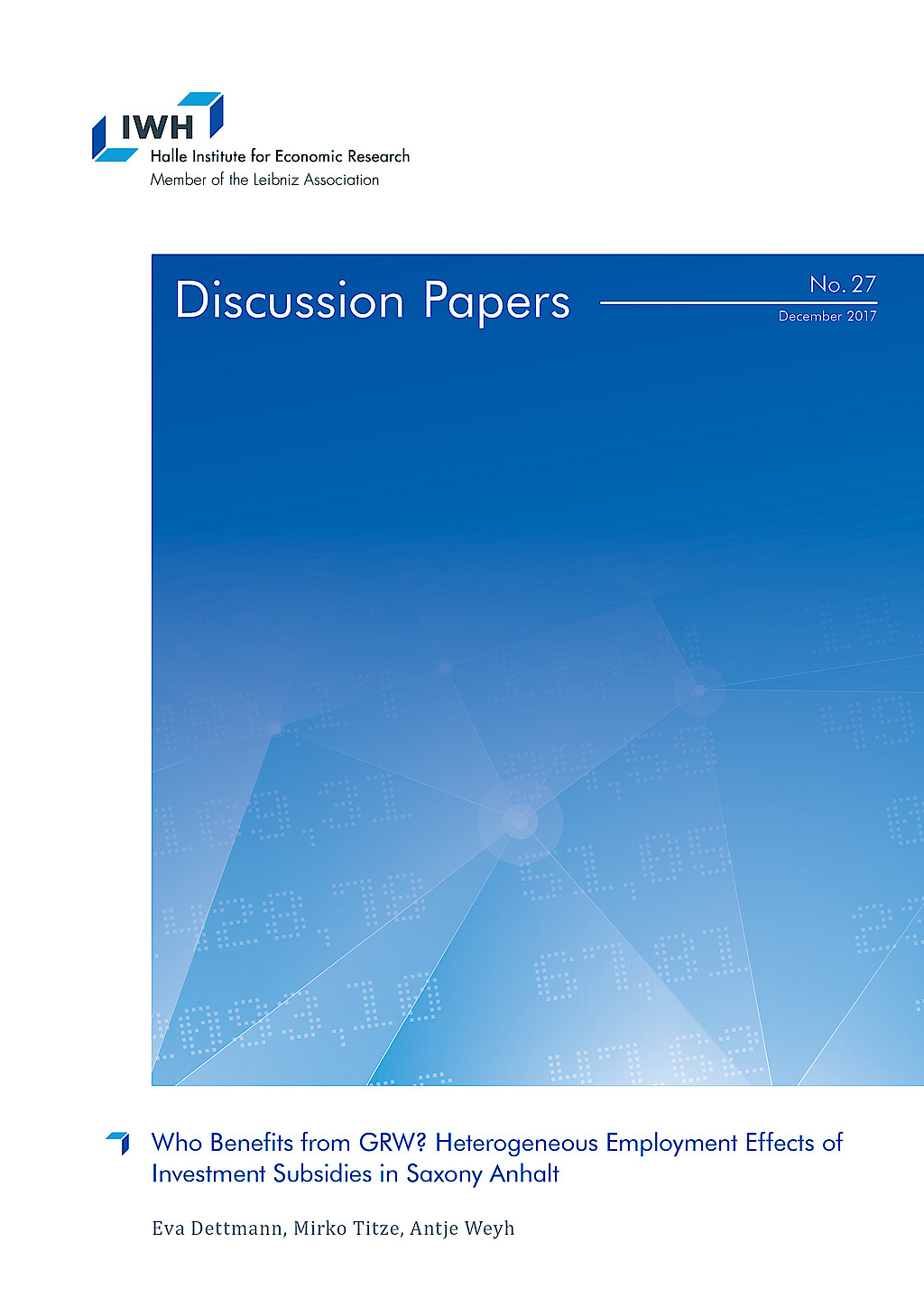
Who Benefits from GRW? Heterogeneous Employment Effects of Investment Subsidies in Saxony Anhalt
in: IWH Discussion Papers, No. 27, 2017
Abstract
The paper estimates the plant level employment effects of investment subsidies in one of the most strongly subsidized German Federal States. We analyze the treated plants as a whole, as well as the influence of heterogeneity in plant characteristics and the economic environment. Modifying the standard matching and difference-in-difference approach, we develop a new procedure that is particularly useful for the evaluation of funding programs with individual treatment phases within the funding period. Our data base combines treatment, employment and regional information from different sources. So, we can relate the absolute effects to the amount of the subsidy paid. The results suggest that investment subsidies have a positive influence on the employment development in absolute and standardized figures – with considerable effect heterogeneity.









